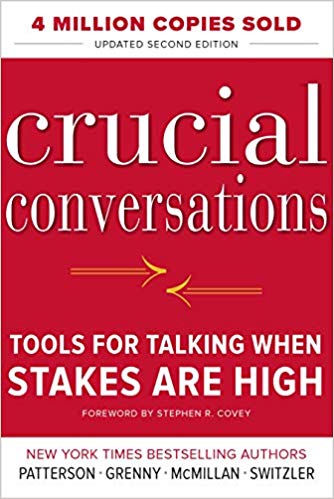

This article is an excerpt from the Shortform summary of "Crucial Conversations" by Kerry Patterson. Shortform has the world's best summaries of books you should be reading.
Like this article? Sign up for a free trial here .
What are contrasting statements? Why do you need them to have healthy communication skills?
Contrasting statements are a technique used in crucial conversations to help deal with misunderstandings. When used correctly, contrasting statements can help you repair trust and get back on track.
What Are Contrasting Statements? Why Do You Need Them?
Contrasting statements are two-part don’t/do statement that assures others that you respect them and clarifies your purpose. You explain what you don’t want, followed by what you do want.
In Crucial Conversations, contrasting is used to help bring context to difficult conversations, and help the person speaking convey their point.
Use Contrasting Statements to Repair Misunderstanding
Sometimes when you’re sharing your views in crucial conversations, others believe unjustifiably that you’re out to harm or coerce them. You shouldn’t apologize because you haven’t done anything wrong – this would be disingenuous. To rebuild mutual purpose/mutual respect when others misinterpret your purpose or intent, you can use the skill of contrasting statements.
In Crucial Conversations, contrasting works this way (using the example of the manager explaining the VP visit to employees):
- “I don’t want to imply that I don’t value your work.” (What the manager doesn’t want)
- “I think your work has been outstanding and I want the leadership to understand the value of what you do.” (What he does want)
Of the two parts of contrasting statements, the don’t is more important because it deals with the misunderstanding that has undermined safety. You address the misunderstanding first, then explain what you intended.
In the Yvonne/Jotham conversation earlier, Yvonne could use contrasting when she returns to the conversation on intimacy: “I don’t want to put this all on you — it’s on both of us. What I do want is to be able to talk about it so we can improve things for both of us.”
Contrasting isn’t apologizing — it provides context and proportion. Sometimes when others take your words the wrong way, you’re tempted to water down what you’re trying to say. Don’t backpedal, but put your words in context: “Let me put this in perspective…I don’t mean to imply…”
You can use contrasting preemptively as well, to enhance safety when what you’re about to say could spark defensiveness: “I don’t want you to think I don’t appreciate…but”
Practical tip: When people take something the wrong way and you start arguing over the misunderstanding, stop and use contrasting. Explain what you don’t mean until it’s safe to return to the conversation.
How to Use Contrasting Statements
In Crucial Conversations, contrasting is used for many reasons. It can be used to improve dialogue, create empathy, and repair trust. Here are some ways contrasting statements are used.
Make Assignments
Once you’ve made your decisions, it’s time for action. To avoid confusion or dropped balls, make assignments.
Assignments have four elements:
- Identify the tasks: What are the deliverables? Use contrasting statements (describe what you don’t want and do want), and give specific (not abstract) examples. If expectations aren’t clear, you’ll be unhappy with the results. For example, when you’re planning to remodel a room, if you’re not clear with contractors about what you want up front, there’s a good chance you’ll waste money and end up with something you didn’t want.
What can you do if someone has a hygiene problem, or something else that makes people avoid him but are embarrassed to bring up?
Challenge
Because people avoid discussing sensitive issues, offenders can go for years without getting information that would be helpful to them.
Instead of directly addressing the offense, others often progress from silence to violence, making jokes, and being sarcastic and disrespectful. But the more time that elapses, the more painful it will be to the person when you do raise the issue.
Solution
Start by using contrasting statements: You don’t want to hurt the person’s feelings, but you do want to share important information.
Establish mutual purpose. Explain that you’re reluctant to raise a personal issue, but need to because it’s undermining the person’s work. Tentatively describe the problem without exaggerating, then move on to solutions.
Make the Content Safe
Skills: Apologize if needed, use contrasting to ensure understanding, and use CRIB (Commit, Recognize, Invent, Brainstorm) to create a mutual purposeCrucial questions: Why is safety at risk? Do we have a mutual purpose and mutual respect? What can I do to rebuild an environment of safety?
Do contrasting statements work? According to Crucial Conversations, they do. Contrasting statements are a great tool to have in your communications toolbox.

———End of Preview———
Like what you just read? Read the rest of the world's best summary of Kerry Patterson's "Crucial Conversations" at Shortform .
Here's what you'll find in our full Crucial Conversations summary :
- How to approach an argument without getting mad
- The mistakes most people make when trying to listen to someone else
- How to come up with win-win solutions that make everyone happy






